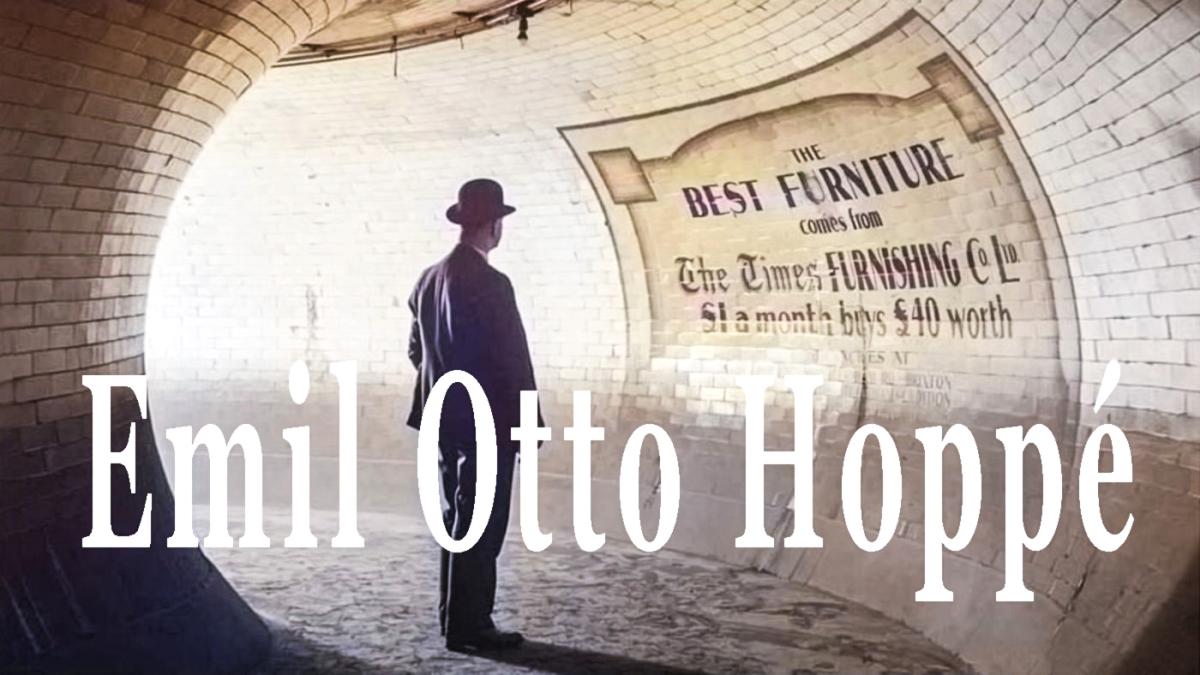Could this photograph from 1937 be the best ever composition taken on London’s tube? It’s certainly very unusual for its time because it suggests a substantial abstraction and mystique. We do not know who the subject is other than its a guy in a bowler hat and his entire figure is almost in shadow. Perhaps it is in fact a central London Railway Official showing Hoppé around the disused station and at that point Hoppé had an eureka moment, and this is the result? E.O.Hoppé was a German who settled in London and was considerably noted for many iconic images taken in those days.
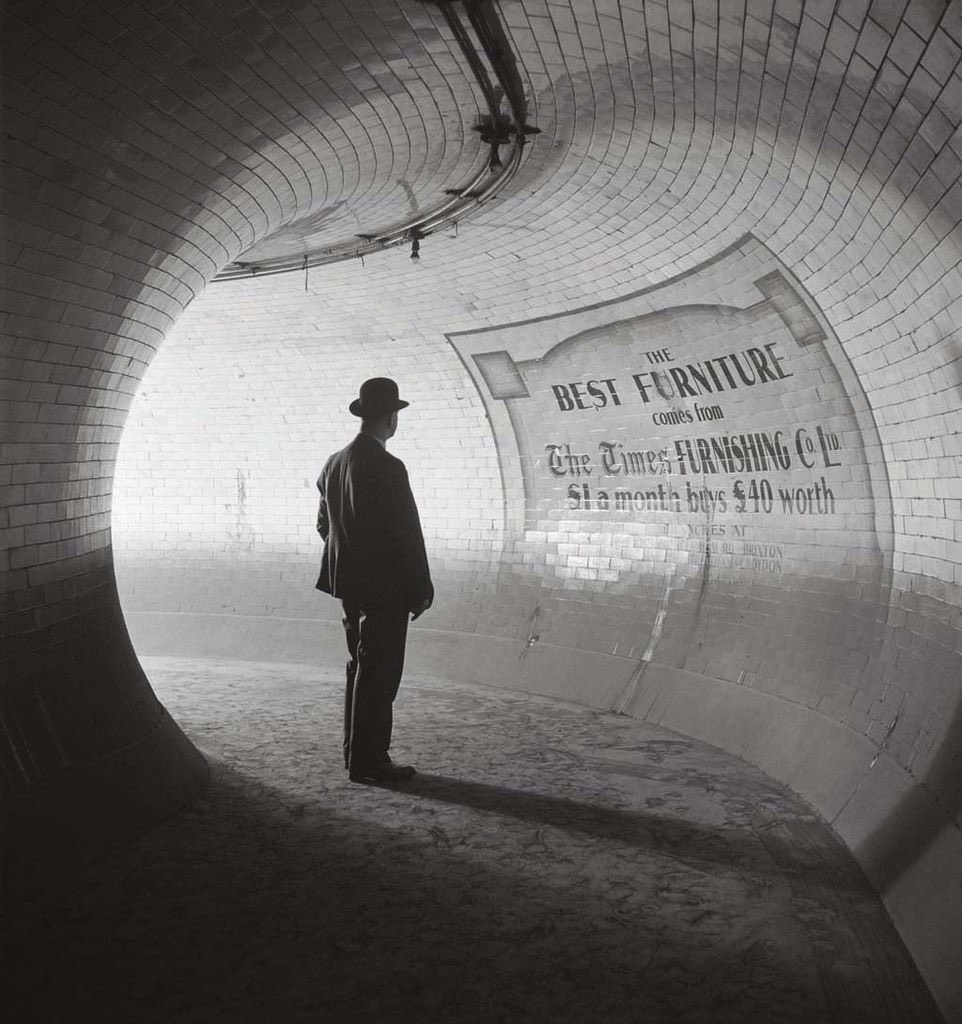
Hoppé’s 1937 photo taken in the British Museum station subway. Source: Twitter
What is Hoppé’s photograph telling us? Is the man uncertain of things? Sees the wording, tries to work out what is ‘best?’ Is he heading in the wrong direction – of life – or whatever beguiles him?
The wording on the advert reads:
The
BEST FURNITURE
comes from
The Times Furnishing Co Ltd
£1 a month buys £10
Branches at
(unreadable) ….Clapham Road, Brixton,
(unreadable) ….Croydon
Is the entire wording relevant? The man with the bowler hat is clearly looking at just one word in the advert – BEST. Why is that? Did he think that particular furniture was in fact the best? Or perhaps he is rather thinking the British Museum station was the best on the Central London railway – and its sad its been closed down – with just this one lovely advert as a poignant reminder of what once was a busy tube station?

The light issuing from the subway passage to the right indicates perhaps that our subject should be thinking about heading that way for a better direction in life. He is all alone, only he can make a decision based upon what he sees. His existential dilemma is quite apparent.
The patterned surface on the floor of the subway is actually dust from the trains & tunnels. Footfalls have created the seemingly random patterns.
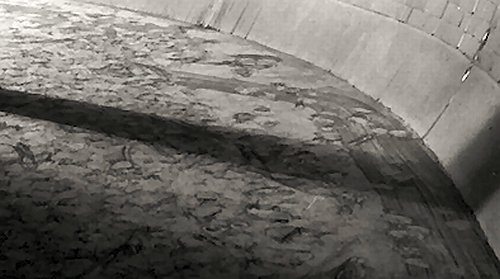
What brought Hoppe to photograph at this location? The station was closed four years previously. Perhaps he had walked through here oft times and remembered the location, especially its unique advert?
Was it because Hoppe had compiled a special book covering London and George VI? Both were products of 1937. The British Museum station could be said to have been a remnant of George VI’s London.
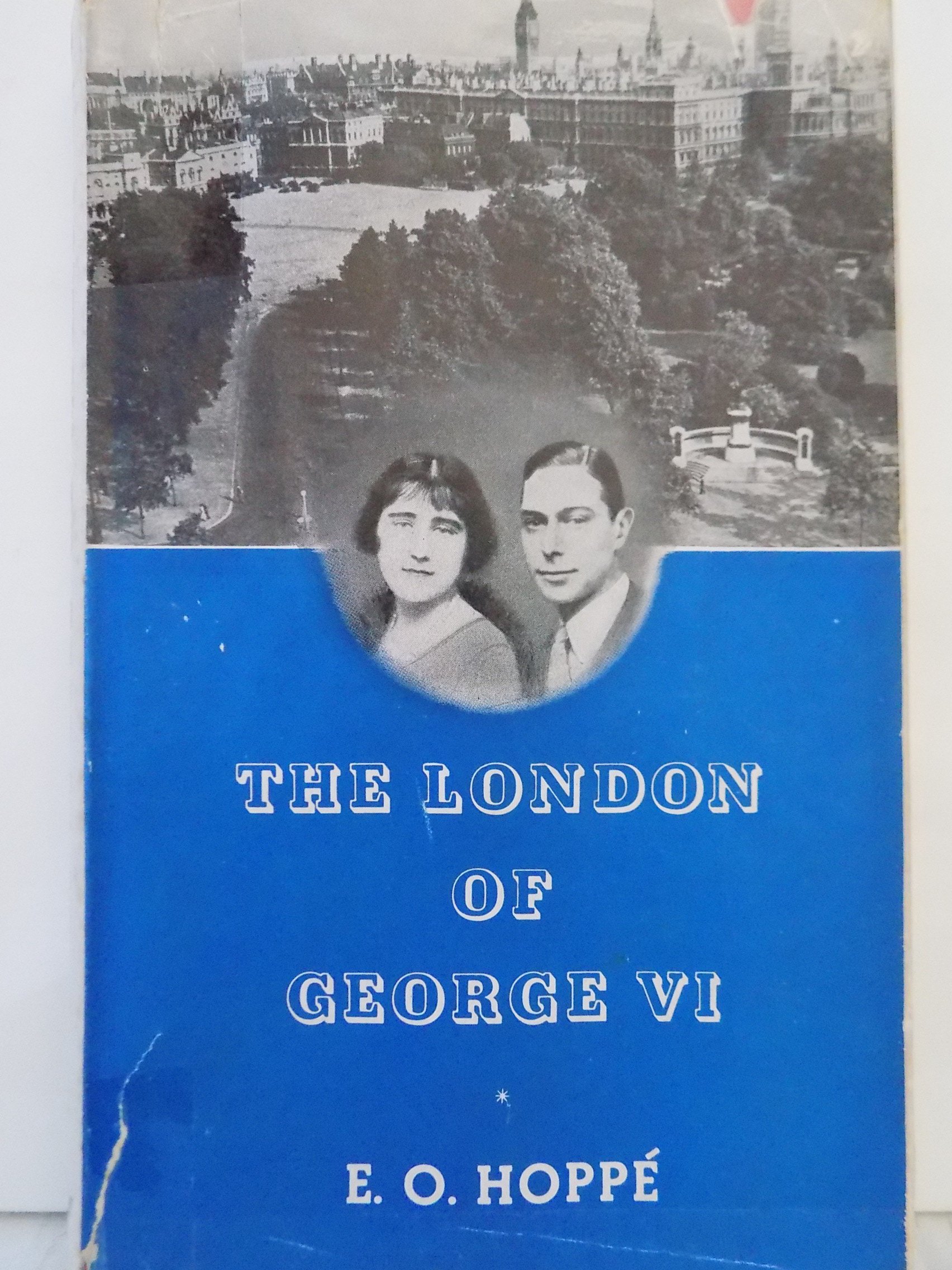
The London of George VI by E. O. Hoppé. Source: Amazon
In all likelihood it seems there wasn’t actually any sort of connotation between the new King, Queen, and the Times advertisement. However the book depicts many of London’s icons including museums and galleries, and the British Museum is the last to be depicted in the book. The image Hoppe took of the British Museum is quite striking for it has a lighting effect that has similarities to that in the photo taken in the old British Museum station!

Hoppe, British Museum, from his book The London of George VI, pub 1937.
Instead of the light sweeping down the huge stairwell as in the British Museum picture, Hoppe instead arranged for the light to sweep round the corner in his tube station photograph. Its a great move, however the one problem for Hoppe would be in the British Museum picture there was very little light bounce whereas in that tube station passageway the glazed light cream tiles would give off quite a lot of light bounce.

If one turns the British Museum station sideways one can see there’s a similar technique to the other composition. Its not the same of course, and I don’t make any claim that it is! But it certainly shows us Hoppe had similar ideas for both in terms of how the light fell on its subjects.
We can deduct from this that the British Museum (and its tube station) had a special meaning for Hoppe. In terms of the guy in the bowler hat admiring (or examining carefully) the Times furniture advertisement, it can too be likened to the people on the huge staircase at the British Museum admiring the artefacts on the wall at the midway staircase landing. Clearly the Times furniture advert could now be seen as an artefact, much the same as those found in the British Museum.
If anyone finds the advert today by means of an excursion into the old British Museum tube station – quite an impossibility apparently – they’d admire the advert as if it was some long lost Golden Fleece missing for centuries! We could jokingly call it the Arc of Covenant! Any persons coming across it would be looking at it and asking themselves, what was this huge advert doing here why was it there and what was its purpose, and the rest of it. And who, or what was, Times Furnishing?
Arts curator Phillip Prodger says Hoppé was interested in the nature of success and failure – the psychology of his subjects – often photographed in intense and startlingly modern tight-cropped close up, with no background detail. This theory might explain the rationale behind Hoppe’s 1937 image, though I somehow doubt those on the British Museum staircase could be described as failures?
Maybe we are all in fact failures because we need to archive and preserve the past as a way of reminding ourselves that others before us probably did so much more than we do these days! The hard work in building the pyramids for example. Today we would employ cranes and machines and computers – that might easily be a way of looking at our present society and see exactly how failed we are.

Hoppe’s photograph was featured on a reissue of his work in 2006. Source: Amazon
Curiously this large Times Furnishing advert was placed here because the company had a new headquarters and major store nearby in High Holborn. When the station closed the LPTB permitted Times Furnishing to have a substitute advert in its new tube station which was no doubt the first of many the station has seen since its opening in November 1933. This can be seen at the LT Museum Archives, and its clear from this the advert stretched right across the top of the escalators and the advert had a real clock embedded too.
The picture couldn’t have been taken without the aid of underground staff. Not unless Hoppe and subject were both an early kind of urban guerrilla! Someone from the LPTB had to give Hoppe and his unknown subject access from New Oxford Street down to the station itself. Or maybe one would think they had arrived by train, which was then held in the station sidings whilst Hoppe’s photo-shoot took place. I think that would have been somewhat difficult because the station platforms were bricked up soon after closure.
Who was the guy being photographed? I do not know. But clearly Hoppe was with his wife. There’s a picture of her looking at her gloves after they have been dirtied simply by putting her hands on the old and very dirty wooden staircase banisters! One wonders if it was his wife hidden just round the corner with a light of some sort to create the illumination the photograph is famous for.

Hoppe’s wife looks at her gloves in disgust after they have been dirtied. Source: Pinterest
One thing intrigues me. What were they doing on the stairs. Maybe just having a look around for other possible locations to do a photograph.
As for the source of light, where was it coming from? Well I think I have the answer to that! If the lifts were still working perhaps a large light source was brought down these, and then positioned just outside the lift entrance, from where it was plugged in and shone towards the advertisement.
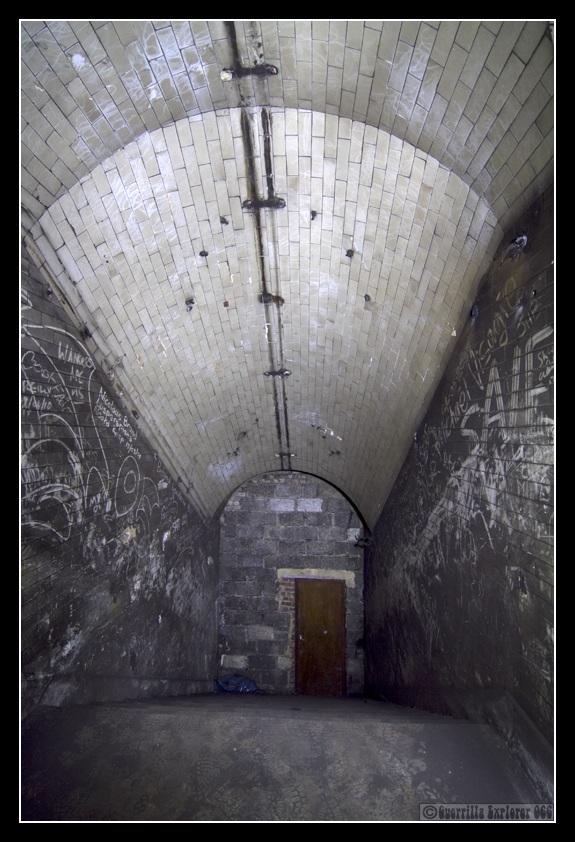
The same flight of stairs in 2011! Source: Guerrilla Exploring
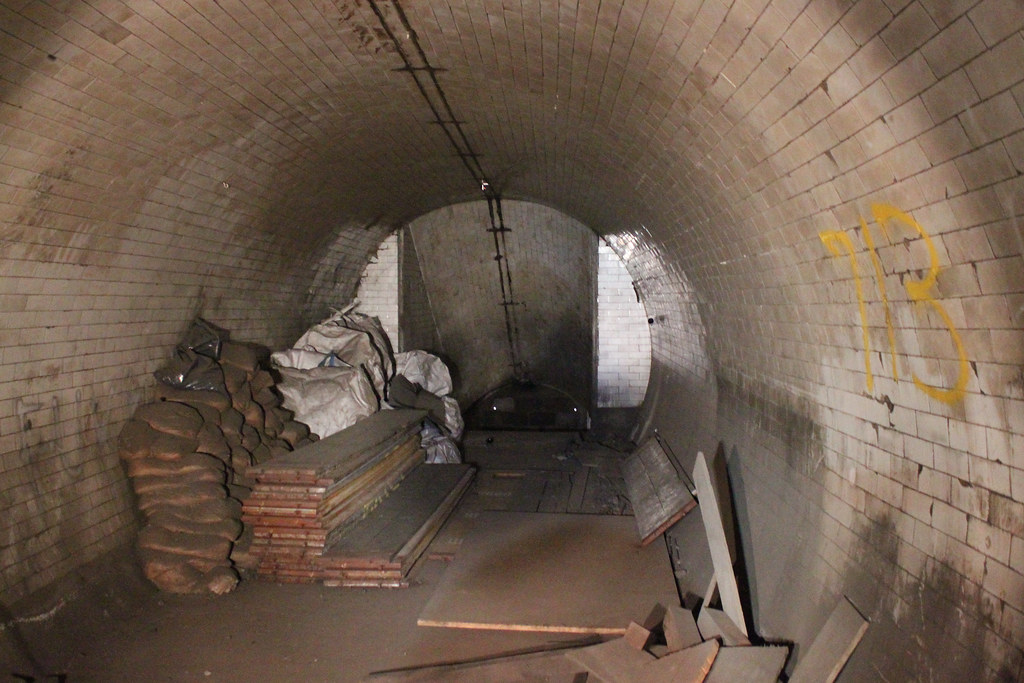
The approach to the flight of stairs seen in 2013. Source: Flickr
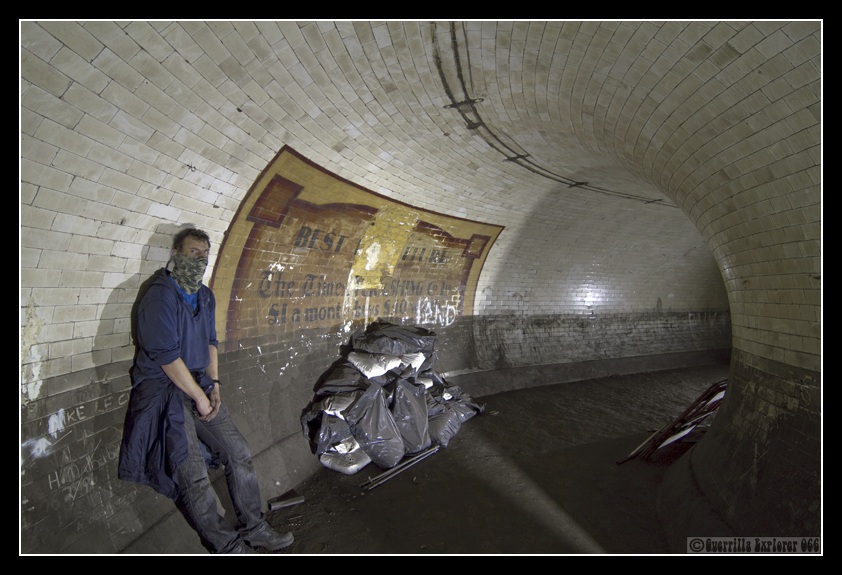
The Hoppe advert seen in 2011 – crop from image on the British Museum feature seen at the Guerrilla Exploring site. The advert frame was painted in what seems a red/gold – with black lettering.

The Times Furnishing advert seen in 2013. Source: Flickr
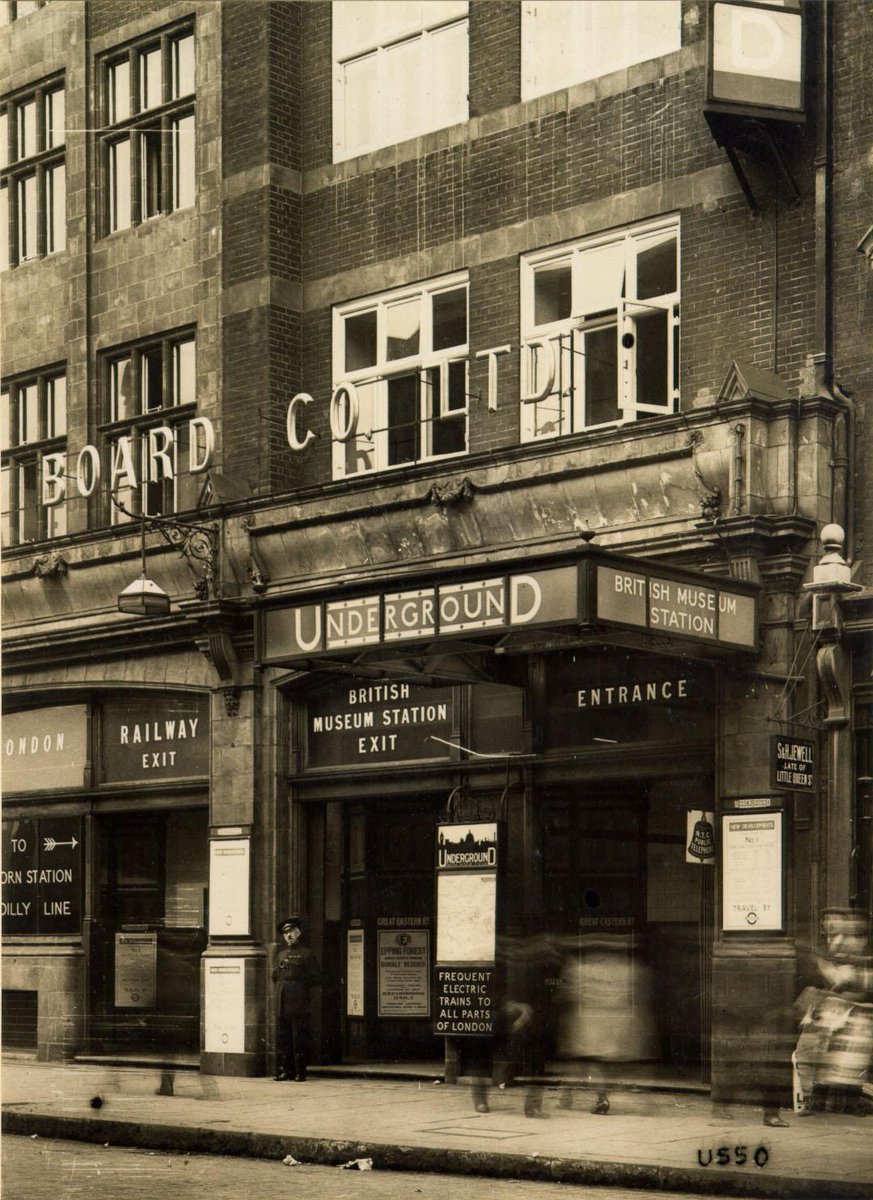
British Museum station in the early 1930s before it closed. Source: Twitter
British Museum station was considered superfluous to requirements as the more useful stations were at Holborn Kingsway and Tottenham Court Road stations were a short walk away thus the London Passenger Transport Board built a new interchange at Holborn which gave connections between the Piccadilly Line and Central London Railway for the first time.

The old station building before it was demolished – on Flickr.
Penny. Just. Dropped! There’s a 1937 London Underground photo (by E.O.Hoppé) which circulates on social media, often without exact location. BUT I’ve just realised that it *is* where a brief description sometimes claims -“British Museum station” – tho it closed down four year… pic.twitter.com/ffb6P6Jitn
— Tim Dunn (@MrTimDunn) September 29, 2023
Secrets of the Underground 2023 (with Tim Dunn and Siddy Holloway) featured the Times Furnishing advert.
